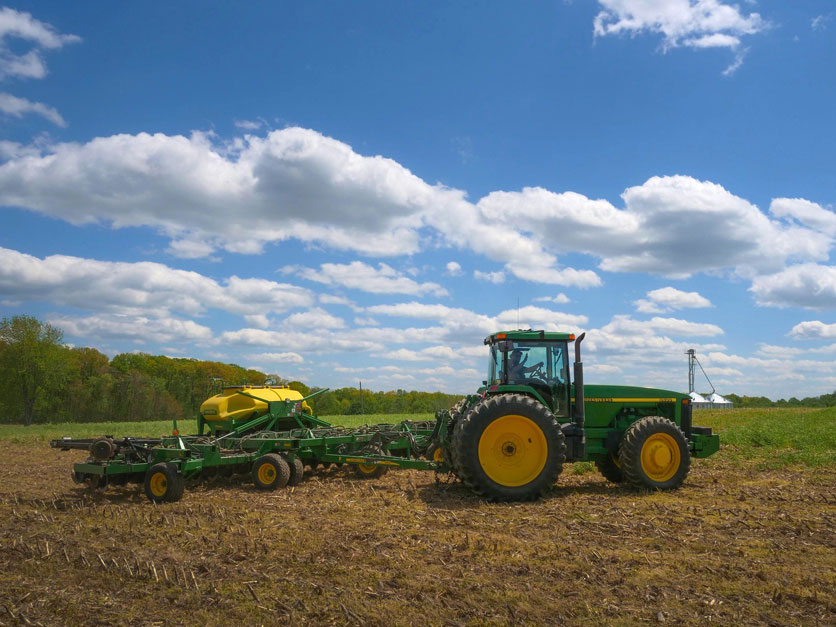Cattle, dairy and hog producers as well as corn and soybean growers are expected to collect the largest shares of USDA’s $16 billion in coronavirus relief payments, which are designed to compensate for losses in sales or market value between January and April.
But dozens of fruit and vegetable crops also are eligible for payments, as are lamb and wool producers. And more commodities could be added, if they can provide the data needed to convince USDA they should be included. That’s a major reason that USDA will prorate the initial payments to 80% of a producer's eligible total.
Cattle producers are expected to receive payments totaling just over $5 billion after the payment limits are considered, according to USDA's cost-benefit analysis released Tuesday along with the final rule for the Coronavirus Food Assistance Program. There is a payment cap of $250,000 per person or entity. The cattle payments are based on both market losses between January to April as well as the current herd.
Dairy producers are expected to receive $2.8 billion after a $700 million reduction because of payment limits. Hog producers are estimated to receive $1.6 billion after a $1 billion reduction because of the payment limits.
Not accounting for the impact of the payment limits, corn payments are estimated at $2.3 billion and soybeans at $845 million. Cotton growers, who have seen some of the biggest market losses from January to April, a drop of 25%, are expected to receive $442 million. Commodities had to suffer market losses of at least 5% to be eligible for the program.
Specialty crop growers are expected to qualify for a total of $2.1 billion after payment limits. The largest amounts for individual commodities, not accounting for payment limits, will be for strawberries ($291 million), beans ($247 million) and broccoli ($205 million).
Without the payment limits, producers of all the eligible commodities could have qualified for as much as $19 billion, USDA said.
“This program is an important down payment in helping farmers and ranchers deal with the unprecedented and unexpected economic fallout related to COVID-19,” according to an analysis by the American Farm Bureau Federation. “However, more help will likely be needed as the full extent of the crisis becomes known.”
Farmers can begin signing up for the program starting Tuesday.
Bill Northey, USDA’s undersecretary for farm production and conservation, told Agri-Pulse he was confident payments would reach producers within a week after they enroll. Once an application is completed and approved by the county office “it can go right into our payment system,” said Northey.
An application and payment calculator will be available online at farmers.gov. Farmers will be allowed to self-certify the amount of sales and inventory they apply to be covered under the program. They also will have to be meet conservation compliance requirements that apply to conventional commodity programs, crop insurance and conservation programs, Northey noted.

USDA Undersecretary Bill Northey
It may be late summer before producers will know whether they will get the full amount of the payment.
USDA is prorating the payments to ensure they stay under a $16 billion cap. The department needs to reserve money for commodities that aren’t yet eligible and isn’t sure how some commodities will be affected by the $250,000 payment limit, said Northey.
Farmers will initially receive 80% of their payment; the remaining 20% will be distributed if there is enough money left over later.
“This money is needed. We want to get it out as soon as we can,” said Northey. “But it is important to be able to have enough money” so farmers who become eligible later “have an equal shot at being able to get paid on with this process.”
Although the CARES Act provided an additional $14 billion that USDA can spend starting in July, he said the department doesn’t know how much of that will be needed to make payments for existing programs and other purposes.
Northey is expecting a number of groups to request to be included in CFAP.
Wheat growers say that three major classes of wheat were unfairly left out of the program and will ask USDA to reconsider. Other producers of commodities including farm-raised fish, maple syrup and even turtle eggs, a product of Louisiana, have expressed interest in getting into the program.
Hard red winter, soft red winter and white wheat are not eligible for payments while durum and hard red spring wheat are.
USDA’s methodology “neglects to incorporate price drops during the January to April timeframe when wheat farmers were marketing their crop or that local cash prices that farmers were receiving were less than futures prices in many areas of the country,” said Dave Milligan, a Montana farmer who is president of the National Association of Wheat Growers. He said NAWG provided evidence that prices for those classes fell by at least 10%.
Conventional eggs may be another issue, according to Northey. Eggs currently weren’t made eligible for CFAP because USDA didn’t distinguish between the impact of the COVID-19 crisis on shell eggs versus eggs that producers sell as liquid product for use in food service and food manufacturing. Prices for liquid egg product dropped dramatically after schools and universities shut down and restaurants and hotels emptied in mid-March, while shell egg prices skyrocketed.
“I just know we'll get” an appeal for payments to egg producers, “and we should, and they should give us some information and we should see if we can make it work or not or if it's logical,” said Northey.
The payment calculations vary depending on the commodities, but the concept behind each is the same: The payments are designed to compensate for price losses that affected both crop and animal sales as well as the value of crops and livestock that hadn’t been sold.
Crops such as corn and soybeans that were sold under futures contracts but not yet delivered aren’t covered by the program, which means that farmers who didn’t hedge their crops may fare better tha n growers who did, said Jonathan Coppess, a farm program analyst at the University of Illinois.
There are slightly different payment rates for money coming from two different accounts USDA is using to fund the program — the Commodity Credit Corp., a revolving fund from which USDA is drawing $6.5 billion, and a $9.5 billion account provided by the CARES Act enacted in March.
Interested in more coverage and insights? Receive a free month of Agri-Pulse or Agri-Pulse West by clicking here.
For corn, soybeans, cotton and other row crops, payments will be based on inventory subject to price risk held as of Jan. 15. The payment will be based on 50% of the producer’s 2019 total production or the 2019 inventory as of Jan. 15, whichever is smaller. That amount will be multiplied by the commodity’s applicable CARES Act and CCC payment rates.
The CARES Act and CCC payment rates for corn are 32 cents and 35 cents per bushel respectively. The rates for soybeans are 45 cents and 50 cents per bushel. For cotton, the rates are nine cents and 10 cents a pound.
For cattle, hogs, and lambs and yearlings, the payment will be calculated based on the producer’s number of livestock sold between Jan. 15 and April 15, multiplied by the payment rates per head, and the number of livestock the producer owned between April 16 and May 14, multiplied by the payment rate per head.
Dairy producers will receive a payment based on two different calculations. The first will be based on the farmer’s milk production for the first quarter of 2020, multiplied by $4.71 per hundredweight, representing the national price decline during the same quarter. The second part will be based on a national adjustment to each producer’s first-quarter production, or $1.47 per hundredweight.
Milk that had to be dumped because a processor or cooperative wouldn’t take it is eligible to be included in the farmer's production.
Details about the payment calculations and eligibility qualifications are available at farmers.gov.
For more news, go to www.Agri-Pulse.com.


